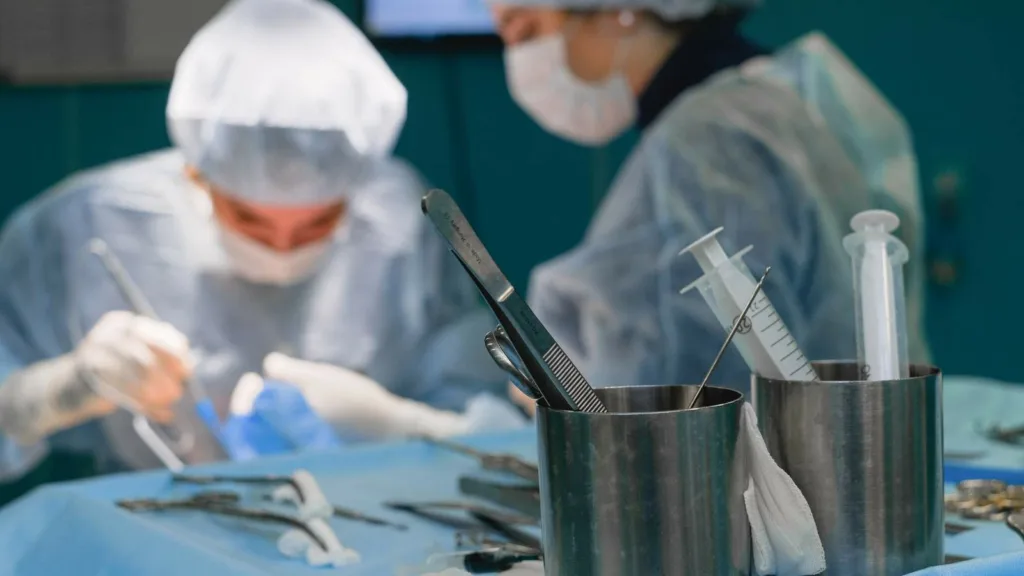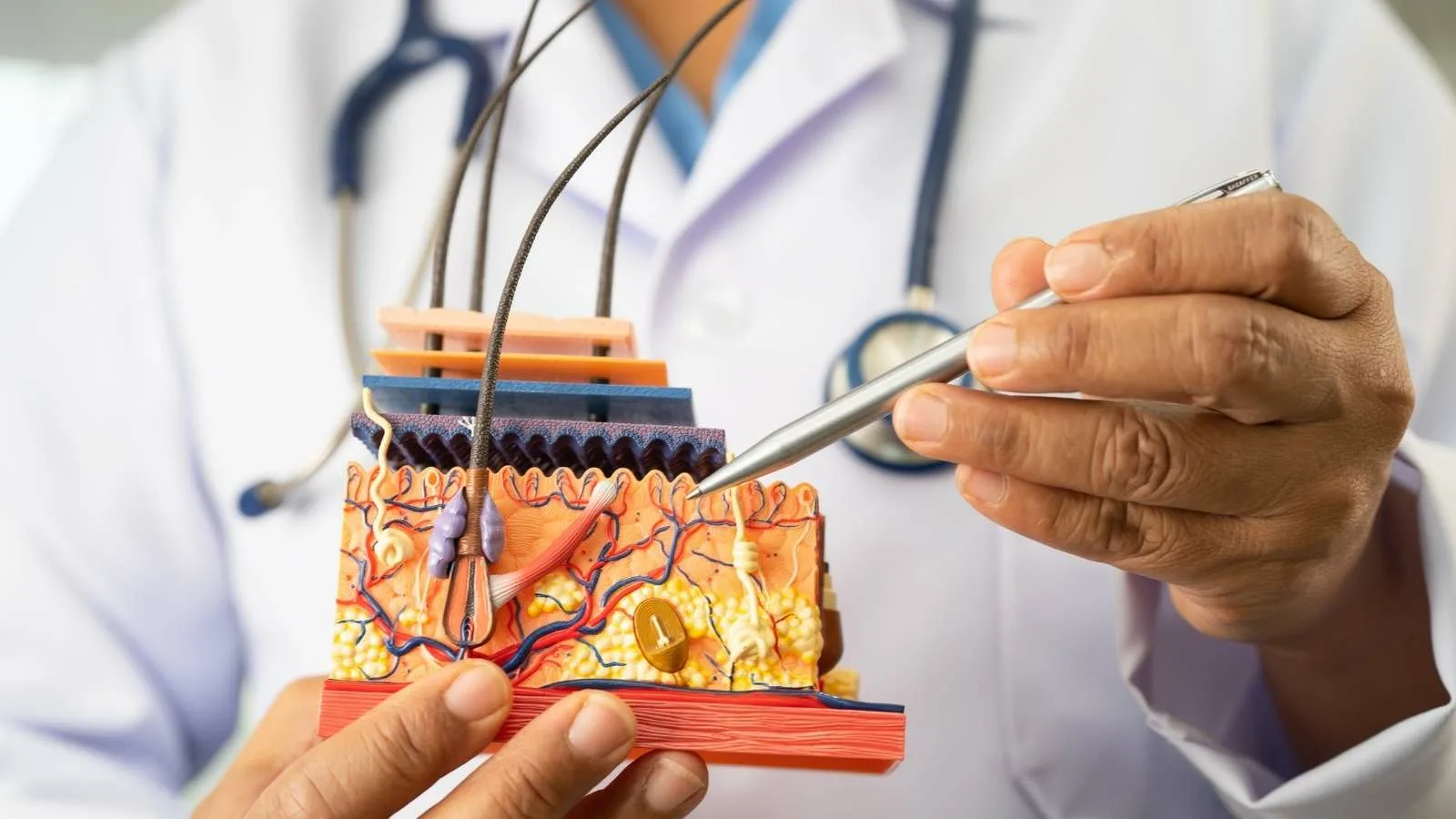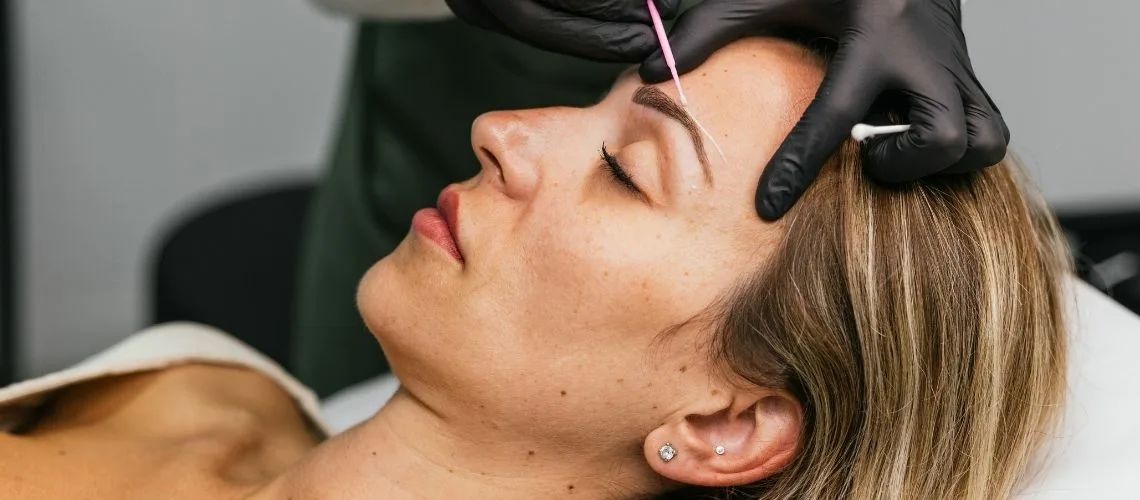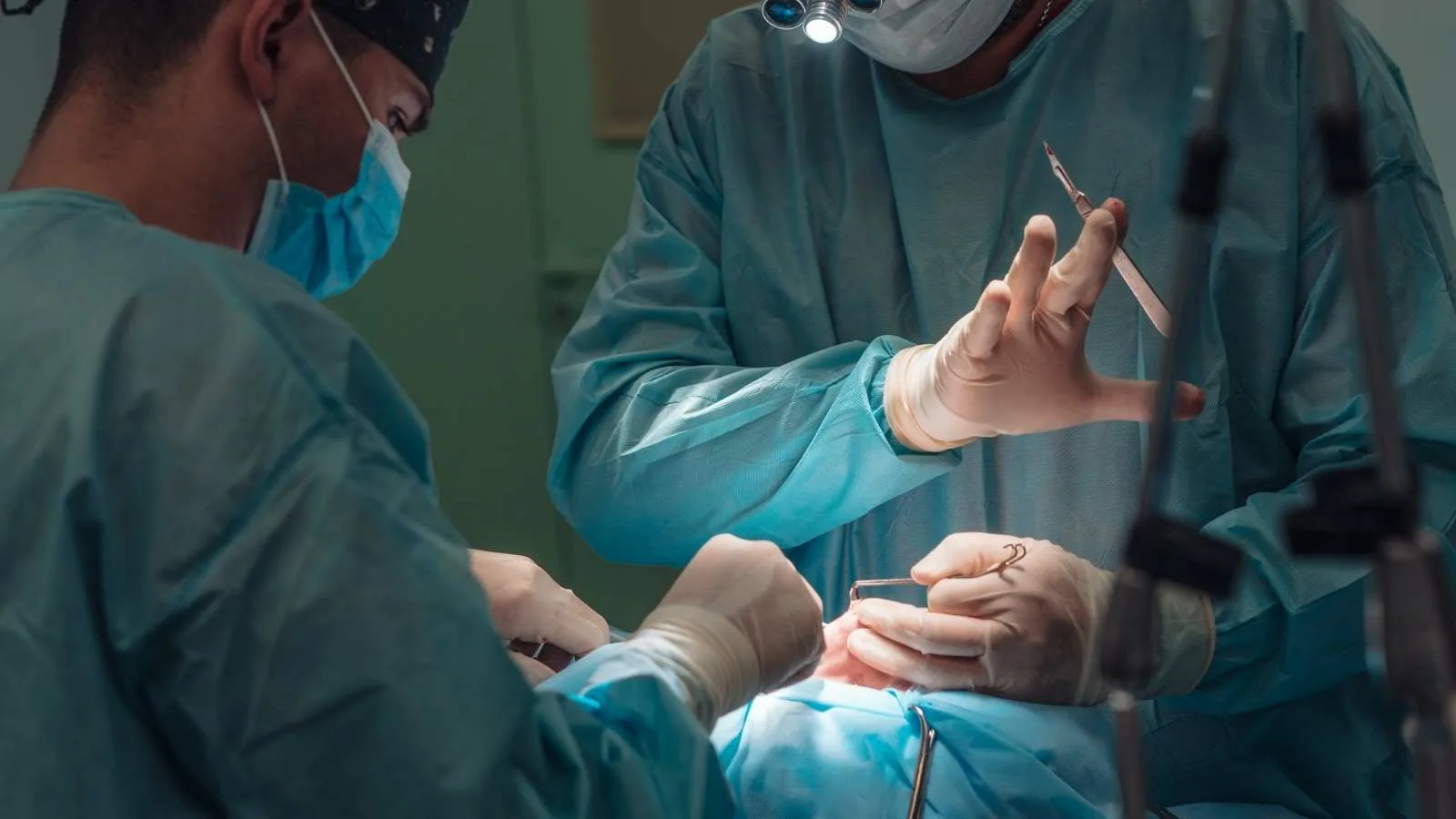Combined aesthetics refers to performing multiple aesthetic surgeries in one session. This approach saves recovery time, reduces costs, and provides comprehensive results by addressing several areas simultaneously.
Common combined aesthetic surgeries include tummy tuck with breast lift, liposuction with Brazilian butt lift, or facelift with eyelid surgery. These combinations create balanced outcomes and enhance overall proportions.
The benefits of combined aesthetic surgery include reduced anesthesia exposure and a single recovery period. Patients achieve more complete transformations compared to undergoing separate procedures at different times.
Safety in combined aesthetics depends on careful planning. Surgeons evaluate overall health, surgery duration, and patient goals to ensure optimal results while minimizing potential risks.
Which Procedures Are Included in Combined Aesthetic Surgery?
| Abdominoplasty + Liposuction | Excess skin is removed and fatty tissues are contoured. The advantage is a more balanced appearance, with a recovery time of 4-6 weeks. |
| Breast Lift + Implant | The breasts are lifted and volume is increased. The advantage is a fuller and perkier look in a single operation. |
| Facelift + Eyelid Surgery | Sagging in the face is corrected and excess eyelid skin is removed. Rejuvenation is achieved, with a recovery period of 3-6 weeks. |
| Rhinoplasty + Chin Contouring | The nose is reshaped and the jawline is improved. Facial proportions are balanced, with recovery completing in 2-4 weeks. |
| Buttock Aesthetics + Liposuction | Buttocks are shaped through fat transfer, and body contours are redefined. The recovery period is 4-6 weeks. |
| Full Body Combination | Simultaneous procedures are performed on areas such as the abdomen, breasts, and face. A comprehensive transformation is achieved, with a recovery time of 6-8 weeks. |
Combined aesthetic surgery is designed to meet the multiple aesthetic needs of patients in a single session. These procedures involve performing various cosmetic surgeries simultaneously on different parts of the body. For instance, combining breast and abdominal surgeries is particularly popular among patients who wish to correct bodily changes post-pregnancy. Known as the “mommy makeover,” this practice combines breast augmentation or reduction with abdominoplasty to provide a holistic transformation.
Facial rejuvenation procedures are also frequently combined. A facelift combined with a neck lift addresses sagging in both the face and neck, providing a more cohesive and youthful appearance. Additionally, eyelid surgery (blepharoplasty) can be merged with a facelift to simultaneously improve signs of aging around the eyes and in the overall facial structure.
In body contouring operations, liposuction can be combined with abdominoplasty or thigh lift to achieve a more balanced and attractive body contour. For breast procedures, mastopexy (breast lift) can be paired with augmentation or reduction surgeries to address volume, shape, and sagging issues in a single session.
For non-surgical treatments, botulinum toxin injections and dermal fillers are often used together, offering optimized facial rejuvenation results without surgical intervention. When combined aesthetic surgery is performed with proper patient selection and a specialized team, it can provide safe and satisfactory outcomes.
What Are the Benefits of Combined Aesthetic Procedures?
One of the most notable advantages of combined aesthetic surgery is the ability to address multiple aesthetic problems during a single surgical session. This approach yields more harmonious and balanced results. For example, combined facial procedures increase overall symmetry, helping patients achieve a younger and more natural look. Studies published in the Aesthetic Surgery Journal indicate that combined interventions provide marked improvements in aesthetic outcomes.
A second major benefit is shortened recovery time. When multiple procedures are performed simultaneously, patients experience only one recovery period. As a result, they can return to their daily lives more quickly. Combined surgeries can also significantly reduce total recovery time and the need for hospital stays.
Cost-effectiveness is another distinguishing aspect of combined aesthetic surgery. Performing multiple procedures at once cuts expenses related to anesthesia, operating rooms, and postoperative care, making it a more economical solution for patients. Additionally, a single anesthesia session offers advantages in both cost and patient safety.
Finally, combined procedures allow for a more comprehensive treatment plan. Surgeons can tackle several aesthetic issues simultaneously, adopting a holistic approach. This makes it easier to achieve your aesthetic goals and boosts patient satisfaction. A comprehensive recovery can lead to increased self-confidence and a better quality of life.
What Are the Types of Combined Aesthetic Procedures?
Combined aesthetics refers to performing multiple cosmetic procedures in the same session or within a short period.
This approach is chosen to shorten the recovery period and achieve more harmonious aesthetic results.
Here are the most common types of combined aesthetic procedures:
- Facial Rejuvenation Combinations: Combining facelift, eyelid surgery, and neck lift procedures.
- Breast Aesthetic Combinations: Combining breast augmentation, lifting, or reduction with liposuction.
- Body Contouring Combinations: Combining tummy tuck, waist sculpting, and liposuction procedures.
- Postpartum Aesthetics (Mommy Makeover): A combination of tummy tuck, breast surgery, and liposuction performed after childbirth.
- Face and Body Combinations: Combining facial rejuvenation with body aesthetic procedures.
Which Risks and Considerations Should Be Taken into Account?
Although combined aesthetic surgeries are an effective way to achieve aesthetic goals, they carry certain risks. For this reason, it is important to adopt an individualized approach for each patient. Combining procedures, especially liposuction and breast augmentation, can increase the complication rate. This increase depends on factors such as the duration of surgery, the techniques used, and the patient’s overall health.
The patient’s age, Body Mass Index (BMI), and general health status are critical parameters that directly affect surgical outcomes. For instance, patients with a high BMI may experience wound healing problems and a higher risk of infection. Smoking is another important factor that negatively affects the healing process and raises the complication rate. A thorough preoperative evaluation is necessary to minimize these risks.
Anesthesia-related complications must be carefully considered, especially in longer surgeries. Extended procedures may elevate the risk of anesthesia-related complications and lead to serious conditions such as deep vein thrombosis. Hence, the total duration of combined procedures should be planned carefully and kept within reasonable limits.
Surgical expertise is the key factor determining success in combined procedures. An experienced surgeon can minimize the risk of complications during the operation while also achieving aesthetically satisfactory results.
How Should You Prepare for Combined Aesthetic Surgery?
Preparing for combined aesthetic surgery is crucial for achieving successful outcomes and minimizing surgical risks. This process involves thoroughly evaluating the patient’s physical and psychological condition, making health-related improvements prior to surgery, and formulating a suitable procedural plan.
The first step in surgical planning is a detailed analysis of any chronic diseases and the patient’s general health status. Conditions such as diabetes, hypertension, or cardiovascular disorders require special attention. Additionally, the targeted surgical areas are examined to ensure the safety and suitability of the procedures.
A successful result requires coordination among a multidisciplinary team of surgeons, anesthesiologists, and nurses. This collaboration ensures a holistic approach to patient care.
Quitting smoking, achieving a healthy weight, and controlling any comorbid conditions significantly improve surgical success. In particular, glycemic control has a direct impact on the healing process.
Psychological preparation begins with obtaining detailed information about the procedures and setting realistic expectations. Methods to reduce anxiety can positively impact postoperative recovery.
Proper skin care can speed up healing, while advanced imaging technologies add precision to surgical planning. Blood tests and other diagnostic methods help determine the patient’s eligibility for surgery.
What Is the Postoperative Recovery Process Like for Combined Procedures?
The recovery period after combined aesthetic surgery varies based on the patient’s overall health, the scope of the procedures performed, and the surgeon’s recommendations. Modern surgical approaches such as Enhanced Recovery After Surgery (ERAS) protocols are applied to make this process faster and safer.
Pain Management and Mobilization: ERAS protocols aim to reduce opioid use while providing effective pain control with fewer side effects. Through multimodal analgesia methods, patients experience a more comfortable recovery. Additionally, early mobilization—such as gentle walking and physical activity—helps minimize complications and supports the healing process. Getting up and moving early on is especially critical for preventing serious issues like deep vein thrombosis.
Wound Care and Preventing Complications: To minimize infection risk, it is essential to closely follow the wound care instructions. Standardized protocols and regular doctor visits optimize wound healing and facilitate early detection of potential problems.
Nutrition and Follow-Up: Initiating oral intake in the early postoperative period aids the body’s healing and repair processes. Regular follow-up appointments and adherence to postoperative guidelines are also vital for improving long-term outcomes.
Frequently Asked Questions
In which cases is combined aesthetic surgery preferred?
Combined aesthetics is chosen when multiple areas need correction in a single session. This method provides more holistic results and shortens recovery time compared to separate surgeries.
Which surgeries are most commonly combined?
Nose surgery, breast aesthetics, tummy tuck, liposuction, and facial rejuvenation procedures can be combined. Depending on the patient’s needs, several procedures may be performed in one session.
Is combined aesthetic surgery risky for patient safety?
With proper patient selection and an experienced surgeon, it is a safe method. However, since the surgery duration is longer, risks such as bleeding, infection, and anesthesia should be carefully evaluated.
How does combined aesthetic surgery affect recovery time?
Since multiple surgeries are performed at once, the initial recovery period may be more intense. However, having only one recovery process overall is more advantageous than separate surgeries.
Who is a suitable candidate for combined aesthetic surgery?
Individuals in good general health, non-smokers, and those without chronic diseases are suitable candidates. Patients with a balanced Body Mass Index can undergo surgery more safely.
How long is the hospital stay after combined aesthetic surgery?
Usually 1–2 days of hospitalization is sufficient. The duration may vary depending on the number and scope of procedures. For minor combined surgeries, same-day discharge is possible.
Are pain and movement restrictions greater after combined aesthetic surgery?
Since multiple areas are operated on at once, pain and movement limitations can be more noticeable in the first days. Regular pain management and following medical advice ease the process.
Are the results of combined aesthetic surgery more permanent?
Permanence depends on the procedures performed. Tummy tuck or breast aesthetics provide long-lasting results, while fillers may need to be repeated over time. Overall, results are satisfying.
Are there more scars after combined aesthetic surgery?
The number of scars depends on the number of procedures. However, aesthetic surgeons hide incisions within natural folds and lines, making scars less visible over time. Regular care reduces scar appearance.
How long does it take to return to daily life after combined aesthetic surgery?
On average, patients can return to social life within 2–4 weeks. For physically demanding activities, this period may be longer. Full recovery and final results may take several months.

Op. Dr. Erman Ak is an internationally experienced specialist known for facial, breast, and body contouring surgeries in the field of aesthetic surgery. With his natural result–oriented surgical philosophy, modern techniques, and artistic vision, he is among the leading names in aesthetic surgery in Türkiye. A graduate of Hacettepe University Faculty of Medicine, Dr. Ak completed his residency at the Istanbul University Çapa Faculty of Medicine, Department of Plastic, Reconstructive and Aesthetic Surgery.
During his training, he received advanced microsurgery education from Prof. Dr. Fu Chan Wei at the Taiwan Chang Gung Memorial Hospital and was awarded the European Aesthetic Plastic Surgery Qualification by the European Board of Plastic Surgery (EBOPRAS). He also conducted advanced studies on facial and breast aesthetics as an ISAPS fellow at the Villa Bella Clinic (Italy) with Prof. Dr. Giovanni and Chiara Botti.
Op. Dr. Erman Ak approaches aesthetic surgery as a personalized art, tailoring each patient’s treatment according to facial proportions, skin structure, and natural aesthetic harmony. His expertise includes deep-plane face and neck lift, lip lift, buccal fat removal (bichectomy), breast augmentation and lifting, abdominoplasty, liposuction, BBL, and mommy makeover. He currently provides safe, natural, and holistic aesthetic treatments using modern techniques in his private clinic in Istanbul.









